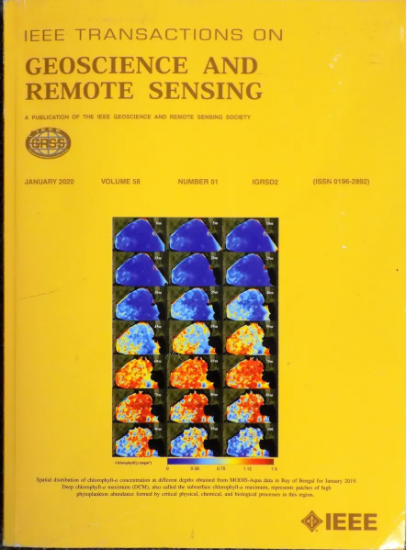Lightweight and Efficient Multimodal Prompt Injection Network for Scene Parsing of Remote Sensing Scene Images
IF 7.5
1区 地球科学
Q1 ENGINEERING, ELECTRICAL & ELECTRONIC
IEEE Transactions on Geoscience and Remote Sensing
Pub Date : 2024-11-27
DOI:10.1109/TGRS.2024.3507784
引用次数: 0
Abstract
Scene parsing of high-resolution remote sensing images with complex backgrounds has received extensive attention in recent years. As unimodal networks are significantly affected by weather conditions, reflecting complex ground conditions fully and accurately is difficult; therefore, multimodal scene analysis is particularly important. Current multimodal scene-parsing networks often employ a dual-coding architecture to achieve high-performance segmentation. Because prompt learning allows models to understand and capture contextual information more effectively, the proposed prompt injection module (PIM) extracts relevant information from frozen normalized digital surface model (nDSM) features and integrates it into the infrared, red, and green (IRRG) branches through a modal embedding block. To extract the contextual semantic relationships between the local and global features in the image efficiently, we also design a dynamic filter block for feature enhancement. This design facilitates the mutual complementarity and guidance of information between the two modalities and optimizes fusion. The experimental results demonstrate that lightweight and effective multimodal prompt injection network (LENet) outperforms most current state-of-the-art lightweight methods on two public datasets, achieving comparable accuracy to that of traditional methods. It has only 10.81 M parameters, with 2.72 GFLOPS. Our code and results are available at面向遥感场景图像场景解析的轻量级高效多模态提示注入网络
复杂背景高分辨率遥感影像的场景解析问题近年来受到了广泛关注。由于单式网络受天气条件的影响较大,难以全面准确地反映复杂的地面条件;因此,多模态场景分析就显得尤为重要。当前的多模态场景分析网络通常采用双编码架构来实现高性能的分割。由于提示学习可以使模型更有效地理解和捕获上下文信息,因此提出的提示注入模块(PIM)从冻结的归一化数字表面模型(nDSM)特征中提取相关信息,并通过模态嵌入块将其集成到红外、红、绿(IRRG)分支中。为了有效地提取图像中局部和全局特征之间的上下文语义关系,我们还设计了一个动态滤波块进行特征增强。该设计促进了两种模式之间信息的互补和引导,优化了融合。实验结果表明,轻量级和有效的多模态提示注入网络(LENet)在两个公共数据集上优于目前最先进的轻量级方法,达到与传统方法相当的精度。它只有10.81 M个参数,GFLOPS为2.72。我们的代码和结果可在https://github.com/LYZ00918/LENet上获得。
本文章由计算机程序翻译,如有差异,请以英文原文为准。
求助全文
约1分钟内获得全文
求助全文
来源期刊

IEEE Transactions on Geoscience and Remote Sensing
工程技术-地球化学与地球物理
CiteScore
11.50
自引率
28.00%
发文量
1912
审稿时长
4.0 months
期刊介绍:
IEEE Transactions on Geoscience and Remote Sensing (TGRS) is a monthly publication that focuses on the theory, concepts, and techniques of science and engineering as applied to sensing the land, oceans, atmosphere, and space; and the processing, interpretation, and dissemination of this information.
 求助内容:
求助内容: 应助结果提醒方式:
应助结果提醒方式:


